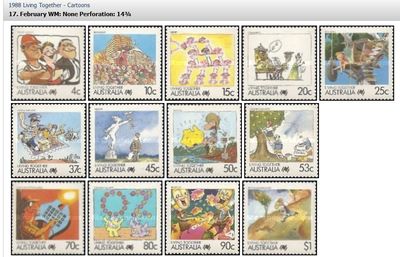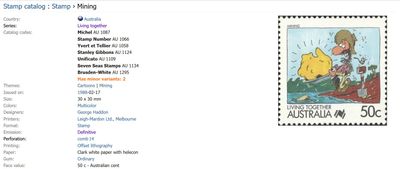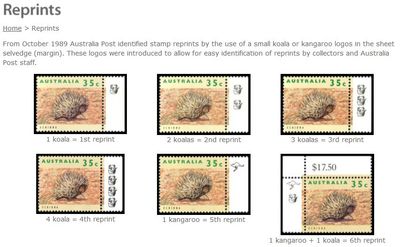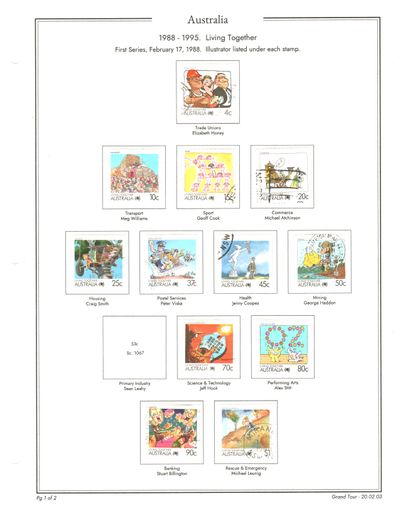I spent some of my Sunday afternoon working on my stamp collection. I'm forming a worldwide collection based on a fictional round-the-world trip I'm calling the Grand Tour. It's a combination of Phineas Fogg and Bilbo Baggins - out the front door and head west until you come back to your front door from the east.
I am currently in Australia, with a stock book full of stamps that I've sorted by year of issue. I decided to create album pages for my favourite sets, regardless of when they were issued, until I get bored and set sail for Papua New Guinea. And my favourite Australia set, by a mile, is the 'Living Together' set from 1988. It's comprised of 27 (!) different cartoons depicting facets of modern Australian life. So I gathered up my stamps, my catalogue, fired up AlbumEasy and got to work.
It took me well over two hours to build two pages and mount the stamps. Using AlbumEasy is straightforward; I have my standard page layout, so it was a case of measuring the size of the stamps (32mm square) and coding up a box per stamp. That took about two minutes. Then the real fun began.
The set is too large to fit on a single page, so the first decision was how to split the set. I could simply sort everything by denomination and put the first 13 stamps on Page 1, but when I looked at how the set was listed in the Stampworld I saw the set was issued in three series, across several months. So I decided to put the stamps issued in February on page 1 and the rest on page 2.

stampworld.com listing of first Living Together series
As I looked at the stamps in more detail, it was clear that different artists drew each cartoon on the stamps. I wanted to know more about this, so I flipped over to Colnect. They list the designer of each stamp, along with catalogue numbers, so I was able to add this information on the pages, catalogue number in the box and designer below. I added the stamp topic below each stamp as well; the topics are printed on the stamp but are very tiny.

colnect.com detailed stamp listing, showing the illustrator's name
Once the designer's names were added, it was just a case of tweaking the number of stamps per row so the page looked nice, printing the pages and mounting the stamps. But I wasn't done yet.
I am missing four or five stamps from the set, and I'd like to upgrade a few where the postmarks are too thick or a corner is dinged. So I went searching online for a dealer who might carry modern Australia. The first dealer I found carried some of the stamps, but they were listed as 'reprints', which confused me. Why would Australia post reprint modern stamps? When were they reprinted? Do I have some reprints instead of real stamps?
More digging taught me that in Australia, they call additional printings of regular issue stamps 'reprints'. It's common practice to have multiple printings of regular issue stamps over many years. But I had never heard of them being called reprints in that context. To me, "reprints" are made by unscrupulous postal authorities, solely for the collector market, years after the original stamps have been invalidated.
A little more digging taught me that modern Australian stamps track the printings in the sheet margins by use of cute icons. They add a koala to the margin for the second printing. Third printing = two koalas. If there's a sixth printing (fifth 'reprint'), they replace the four koalas with a kangaroo. So in Australian postal parlance, a kangaroo plus two koalas equals seven additional printings. Fascinating!

reprint marking examples, via stamps.chrisdehaer.com.au
I don't have any stamps with margins, so I don't know anything about the printings of my stamps. But now I want to find some with the margin markings. If I find some, they will go on a third or fourth page. And that is how general, simplified collections morph into specialist collections.
As I put my Grand Tour album away, I was a frustrated by how little I had accomplished in my stamping afternoon. Two hours for two pages? I'll never get to Asia at this rate, let alone Africa and South America!
But this experience is exactly why the hobby appeals to me. I can take an inexpensive hodgepodge of postage stamps and by looking at them deeply and doing a little bit of research, learn a whole lot about a tiny thing. I can consider what 'the establishment' in Australia in 1988 considered important and worthy of celebrating. I can admire the different illustrative styles at the time, and dig into the artists if I want. I can learn about the different terminology and processes between how they printed stamps in Australia as opposed to Canada.
And I can learn all of this without any hope of profiting from it (outside of possibly a pub quiz.) Learning just because it's fun. That's a good Sunday afternoon for me.

The final result, page one of two.